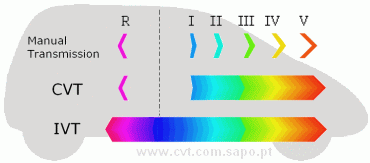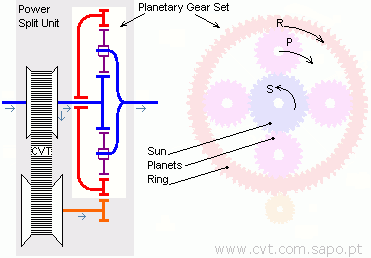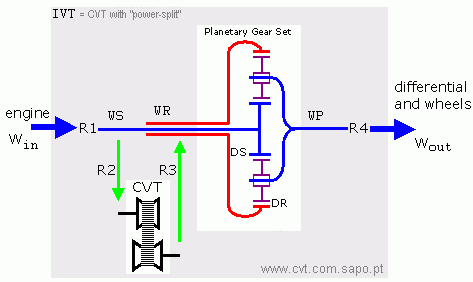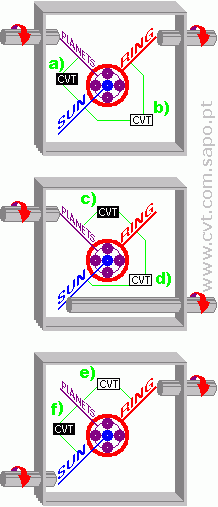
CVTs only provide positive ratios.
Therefore, a reverse gear and a clutch (or a
torque converter) are necessary.
IVTs (Infinitely Variable
Transmissions) provide a full range of ratio from
reverse, through stationary, and from extremely low speeds, up to high
overdrive.
The engine is permanently connected to
wheels. Clutch and reverse gear are
not required.


